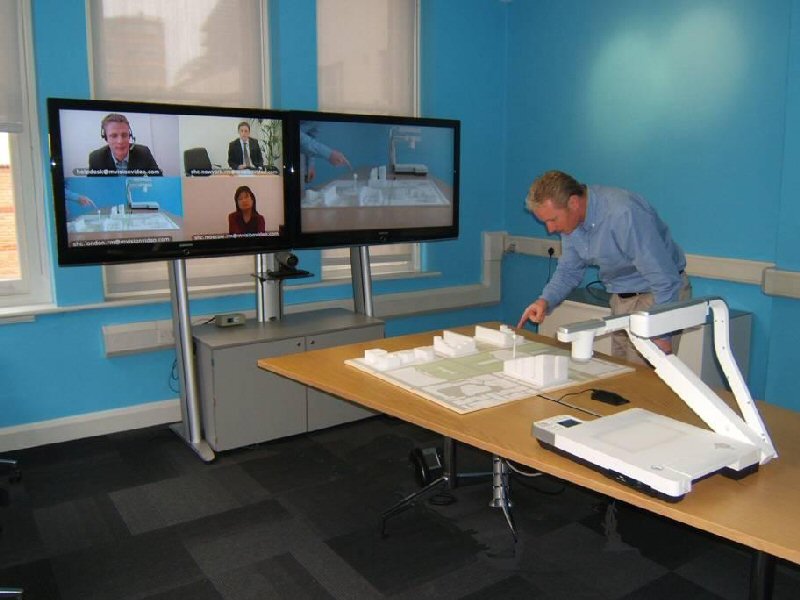About Video Conferencing & Telepresence
As business becomes faster, leaner, meaner, greener and more global, the pressure is on for organisations to do the same. But that’s easier said than done. And with shrinking budgets, fewer resources, and less tolerance for failure than ever before, it’s getting tougher all the time.
Despite it all, most of us still run our business lives in much the same way we always have – schedules packed with meetings here, there, and everywhere and as many road, rail, and air journeys as actual appointments.
If only that half-hour meeting didn’t involve a half-day round trip to get there and back. If only you could walk across the office for that vital face-to-face meeting instead of trekking across the globe.
If only technologies like video conferencing weren’t so expensive and inaccessible. If only you had Crosspoint Solutions.
Who Uses Video Conferencing and Telepresence?
It’s no longer enough for businesses to simply gain a competitive edge, to optimise efficiency and to maximise profitability. They have to do it better, faster, cheaper.By removing the traditional barriers to video conferencing – cost, bandwidth availability and lack of technical resources – Crosspoint Solutions has been able to bring the benefits of visual communications within the reach of even the smallest organisations.
From small design agencies collaborating with homeworkers, to large banks using video to enhance relationships between their brokers and customers. Organisations of every kind are embracing the power, value, and sheer common sense of video communications.
Organisations are not just using video conferencing for face to face meetings, but applications like training, collaboration, recruitment, diagnostics, emergency response, business continuity and disaster recovery, data sharing, access to remote support and expertise. video conferencing does it all.Welcome to the world of visual communications, where technology can help your business to overcome the limitations of time and distance and fully realise the benefits of globalisation. As a solution that immediately accelerates collaboration and performance, visual communication technology transforms the workplace and the greater working world to enable sophisticated and engaging decision-making, interaction and
communication. Today we work in a connected world where distance has ceased to be
a stumbling block to commerce.
Organisations are truly global and cross time zones and borders effortlessly. People who are located at distances that would have been considered insurmountable 20 years ago connect and interact daily… instantly… at the click of a mouse.
Technology has enabled communication in incredible ways. Visual communications is
the next logical step for global businesses to evolve their communications media and take collaboration to the next level.
In a world where technology is the great enabler, the ability to make eye contact with someone and read their expression and mannerisms is becoming more important and means we need richer collaboration, with greater nuance and quality.
The question is: Is there a way to overcome the paradox of the globalised workplace, and offer employees a rich interactive experience, without the costs and delays of extensive travel? We believe there is a technology solution that solves these dilemmas. We call it visual communications.
Diverse and complex problems
• Globalisation is driving an increasingly separated community of workers who work in teams towards common goals, but are separated by time zones, continents and thousands of air miles.
• Workers obtain 50% to 75% of their information from other people, but now need to work with more people in more locations.
Business benefits
• Increased productivity when people can communicate in a richer manner.
• Time saving when employees don’t waste time in transit.
• Decreased carbon footprint.
• Cost savings − recoup the initial cost of your investment in a short time with time
saved, reduced travel expenses, improved productivity and reduced employee fatigue. Continued cost savings can be returned to business operations and contribute to enhanced operational margins.
• Use visual communications to enhance existing business processes. For example, in industries where diagnostics are essential but skills are scarce, like on oil rigs, in healthcare and car repair, visual communications can significantly reduce the time and expense required to find the answer.
• Consider the ‘soft’ elements of communication like expression and individuality, and how it contributes to a feeling of teamwork and personal cooperation between disparate teams.
Video has proven over and over again that organisations can save money by implementing video conferencing capabilities and making them high quality and easy to use.

